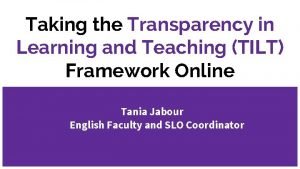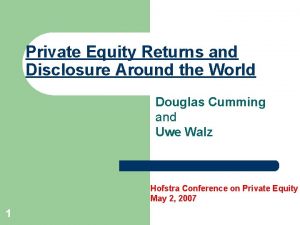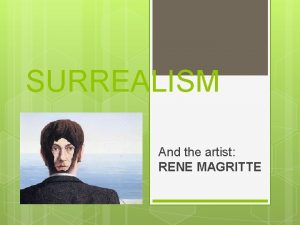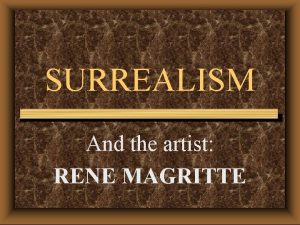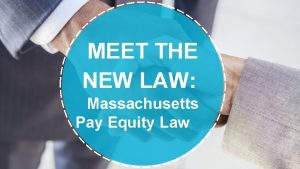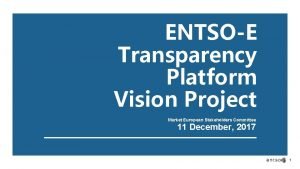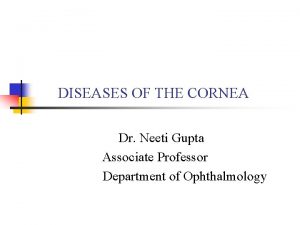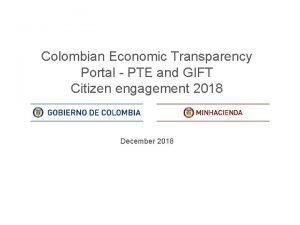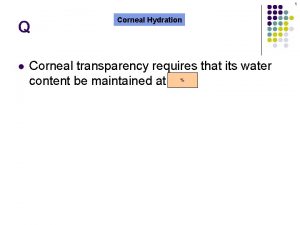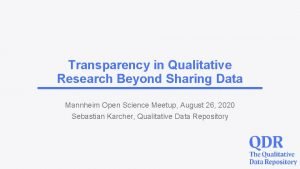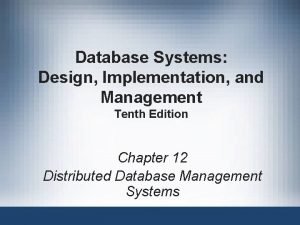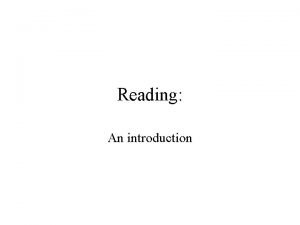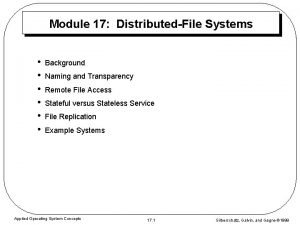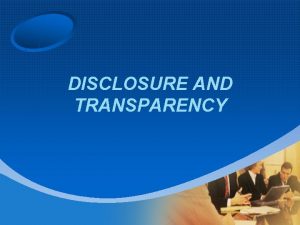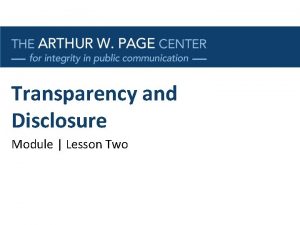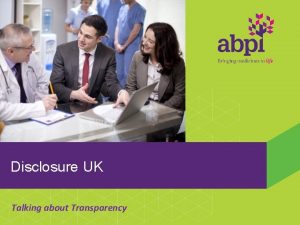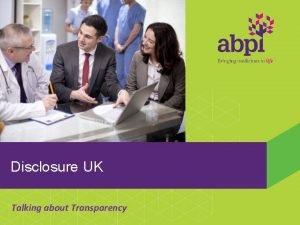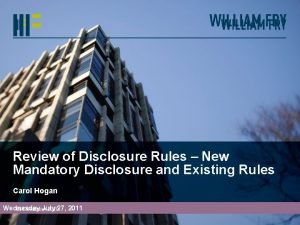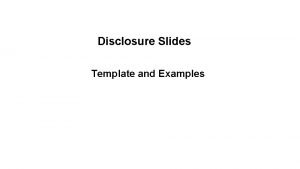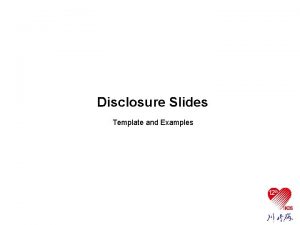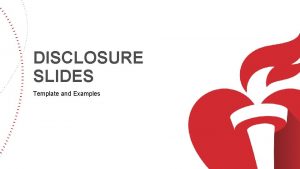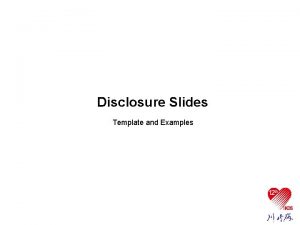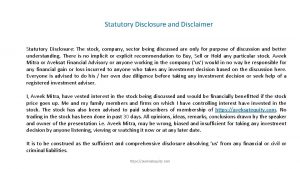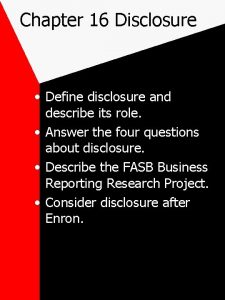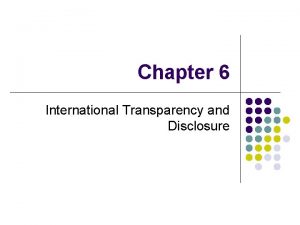Transparency and Disclosure Module Lesson Two Lesson Two















- Slides: 15

Transparency and Disclosure Module | Lesson Two

Lesson Two| Introduction Lesson Overview • The role of transparency and disclosure in CSR activities • Guidelines for transparency and disclosure • Regulators and regulations about transparency and disclosure

Lesson Two| Definitions • Corporate Social Responsibility (CSR) – Philanthropic activities that allow businesses to provide social good and create long-term value for the organization • Pay-for-play – In public relations, the term means “the undisclosed compensation of reporters or media for the placements of editorial material” (PRSA, 2009 b). • Native Advertising – Content presented in the native format of a media source, but paid for by a sponsoring organization. Also called advertorials and sponsored content. • Astroturfing – The unethical use of front groups

Lesson One | Introduction CSR • Criticism of CSR – Only a face-saving tactic • Role of transparency and disclosure – Necessary to build and maintain relationships • Should build mutually beneficial relationships for businesses and non-profits

Lesson Two| CSR and Crisis Coca-Cola and Global Energy Balance Network • Coca-Cola – World’s largest soda company • Global Energy Balance Network (GEBN). – A nonprofit – Advocated that “weight-conscious Americans are overly fixated on how much they eat and drink while not paying enough attention to exercise” (O’Connor, 2015, para. 3). • Coca-Cola donated $1. 5 million to GEBN and close to $4 million to two of its founding members in 2015 (O’Connor, 2015). • Controversy around sugary drinks and obesity

Lesson Two| CSR and Crisis Coca-Cola and Global Energy Balance Network • The New York Times – GEBN’s website was registered to the Coca-Cola headquarters in Atlanta and the company was listed as the site’s administrator (O’Connor, 2015). • The Associated Press – GEBN was part of plan to counter the “shrill rhetoric” of “public health extremists” (Choi, 2015, para. 4). • The president of Coke North America – Believed that Coke’s intentions with GEBN were good and the goal was to be helpful (Choi, 2015). • GEBN was disbanded three months after the NYT’s story

Lesson Two| Transparency and Disclosure’s Role in CSR • Page Principles – Public perception is determined 90 percent by what the organization does and only 10 percent what it says – Especially when it discloses very little. • Business and non-profits must be transparent and have appropriate disclosure about CSR activities

Lesson Two| Transparency and Disclosure Guidelines • Page Principles – Advise practitioners to tell the truth – Listen to stakeholder to learn what information is needed – Always manage for tomorrow

Lesson Two| Transparency and Disclosure Guidelines • Reveal any conflicts of interests • Disclose financial interests • Avoid deceptive practices

Lesson Two| Transparency and Disclosure Guidelines Conflicts of Interest • These are part of professional and personal life • Disclosure builds trust • Anything that might be perceived as biasing the practitioner’s judgment

Lesson Two| Transparency and Disclosure Guidelines Disclose Financial Interests • Pay-for-play – From early radio days when DJs were paid to pay specific musicians. – “The undisclosed compensation of reporters or media for the placements of editorial material” (PRSA, 2009 b). • Sponsoring coverage in media – Advertorials, native advertising, and sponsored content

Lesson Two| Transparency and Disclosure Guidelines Deceptive Practices • Avoiding and correcting false facts • Astroturfing – Deceptive use of front groups as a grassroots organization • Paying for volunteers – Experts endorsing an idea, people posting comments on a blog, advocates filling a city council meeting

Lesson Two| Legal and Regulatory Requirements • The Security and Exchange Commission (SEC) – Information released about publicly-traded companies – SEC’s Regulation Fair Disclosure policy requires that all “material nonpublic information” be released to investors at the same time (Security and Exchange Commission, 2010, para. 1). • The Federal Trade Commission (FTC) – Regulates the types of information used about products and services. – For example, internet content creators must state anything of value given to them to secure coverage. • Every industry has specific rules and regulations that practitioners must follow.

Lesson Two| Discussion Questions Brainstorm CSR partnerships that are mutually beneficial. Why are these beneficial? What was the role of disclosure and transparency? You are working for a struggling midsized newspaper, a company comes to you with a native advertising offer? The content will be marks as sponsored content. Do you accept the offer? If you were the company, would you sponsor native advertising? Your public relations team works for the largest manufacturer of widgets. The second-largest manufacturer wants to hire your team. How do you handle this? For a press conference, you are worried about not filling the room and it looking empty. What should you do? Should you hire volunteers? Should you require your employees to come? What do you do if the real press notice that they don’t know many in the audience?

Lesson Two| References • • Choi, C. (2015, Nov. 25). AP Interview: Coke exec on 'adversarial' ties with critics. AP: The Big Story. Retrieved Nov. 8, 2016, from http: //bigstory. ap. org/article/479 df 5 d 750 db 455 b 811 c 301 fcf 509 b 78/ap-interviewcoke-exec-adversarial-ties-critics O’Connor, A. (2015, Aug. 9). Coca-Cola Funds Scientists Who Shift Blame for Obesity Away From Bad Diets. New York Times, Retrieved Nov. 8, 2016, from http: //well. blogs. nytimes. com/2015/08/09/coca-cola-funds-scientists-who-shiftblame-for-obesity-away-from-bad-diets/? _r=0 Public Relations Society of America. (2009 a). Professional Standards Advisory PS 11: Professional Conflicts Of Interest. Retrieved from http: //www. prsa. org/About. PRSA/Ethics/Ethical. Standards. Advisories/Documents/P SA-11. pdf Security and Exchange Commission. (2010). Final Rule: Selective Disclosure and Insider Trading. Retrieved from http: //www. sec. gov/rules/final/33 -7881. htm
 C device module module 1
C device module module 1 Tilt assignment template
Tilt assignment template Social audit ap
Social audit ap Private equity returns and disclosure around the world
Private equity returns and disclosure around the world Transparency surrealism
Transparency surrealism Transparency in surrealism
Transparency in surrealism Massachusetts
Massachusetts Alit group prague
Alit group prague Scaling transparency hides
Scaling transparency hides Pseudocornea
Pseudocornea Ocp transparency portal
Ocp transparency portal Corneal transparency
Corneal transparency Beyond science
Beyond science Distributed database transparency features
Distributed database transparency features Linguistic transparency
Linguistic transparency Naming transparency
Naming transparency

